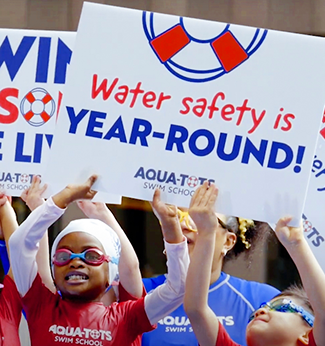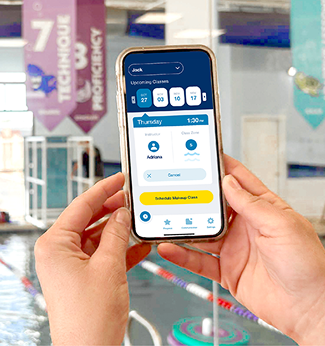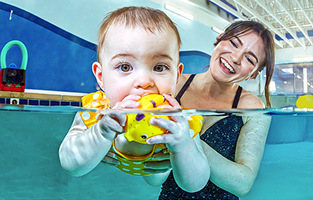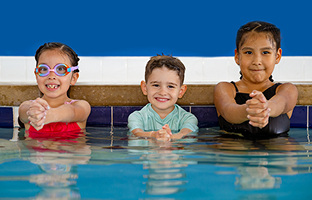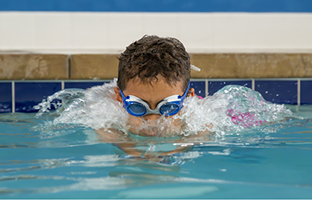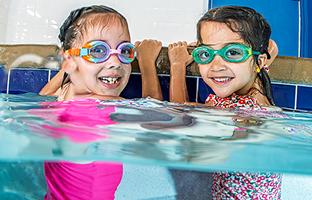S.N.A.P.—Swim Lessons for Children with Disabilities
Parents are all remarkable superheroes, but it is said that parents of children with disabilities are the equivalent of Batman, Captain America and the Incredible Hulk combined with a side of Mary Poppins. Regardless of which superhero caregivers relate to, it’s important for children with disabilities to develop water safety skills as early as possible.
Swimming is full of advantages, but for children with disabilities, it offers three primary benefits:
Physical Benefits
Swimming is one of the best full-body workouts for children of all ages and skill levels, especially those with disabilities. Learning to swim improves balance, coordination and the development of motor skills, while water resistance builds muscle tone and strength. Additionally, floating and propelling through the water isolates muscle groups and develops coordination. Swimming also improves range of motion for those with movement restrictions. Because buoyancy in the water reduces body weight by 80%, swimming offers an ideal environment for movement with less restriction.
Emotional Benefits
The look on a child’s face when they accomplish a goal or achieve a new skill is priceless, and swimming provides plenty of opportunities to build self-confidence. As children learn new skills, their confidence grows, and they are often inspired to explore new skills they wouldn’t have tried before.
Additionally, swim lessons are designed with progression in mind, and one of the benefits of our Students Needing Adaptive Programming (S.N.A.P.) classes is to get children with disabilities comfortable in a cohesive social environment. Progression continues to develop as they interact with their swim instructor and others in the school.
Safety Benefits
According to the National Autism Association, drowning is a leading cause of death for children with autism. This reality is due to three common autistic characteristics: wandering, fascination with the water, and a lack of understanding of danger. As a whole, children with disabilities are at an increased risk of drowning and establishing water safety skills is one of the best ways to protect them. As with all children, this could mean the difference between life and death if they find themselves accidentally in the water.
Swim lessons also help children with disabilities develop spatial awareness as they use reference points and explore water depth. This increased spatial awareness, along with the physical balance that naturally develops during swimming, can keep children with disabilities from falling into the water, offering additional safety in and around the water.
Aqua-Tots’ Students Needing Adaptive Programming (S.N.A.P.) classes create private lessons tailored to a child’s special needs and abilities, and we’re committed to helping all children develop a life-long love of the water. To learn more about this program and what your local school offers, please contact your neighborhood Aqua-Tots Swim School.



